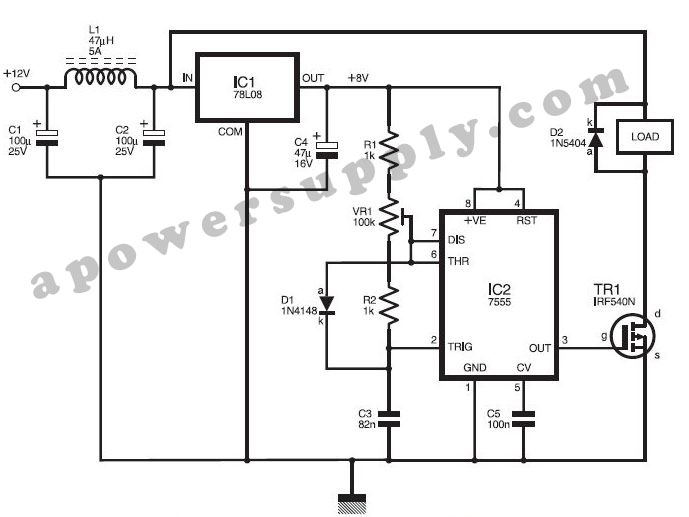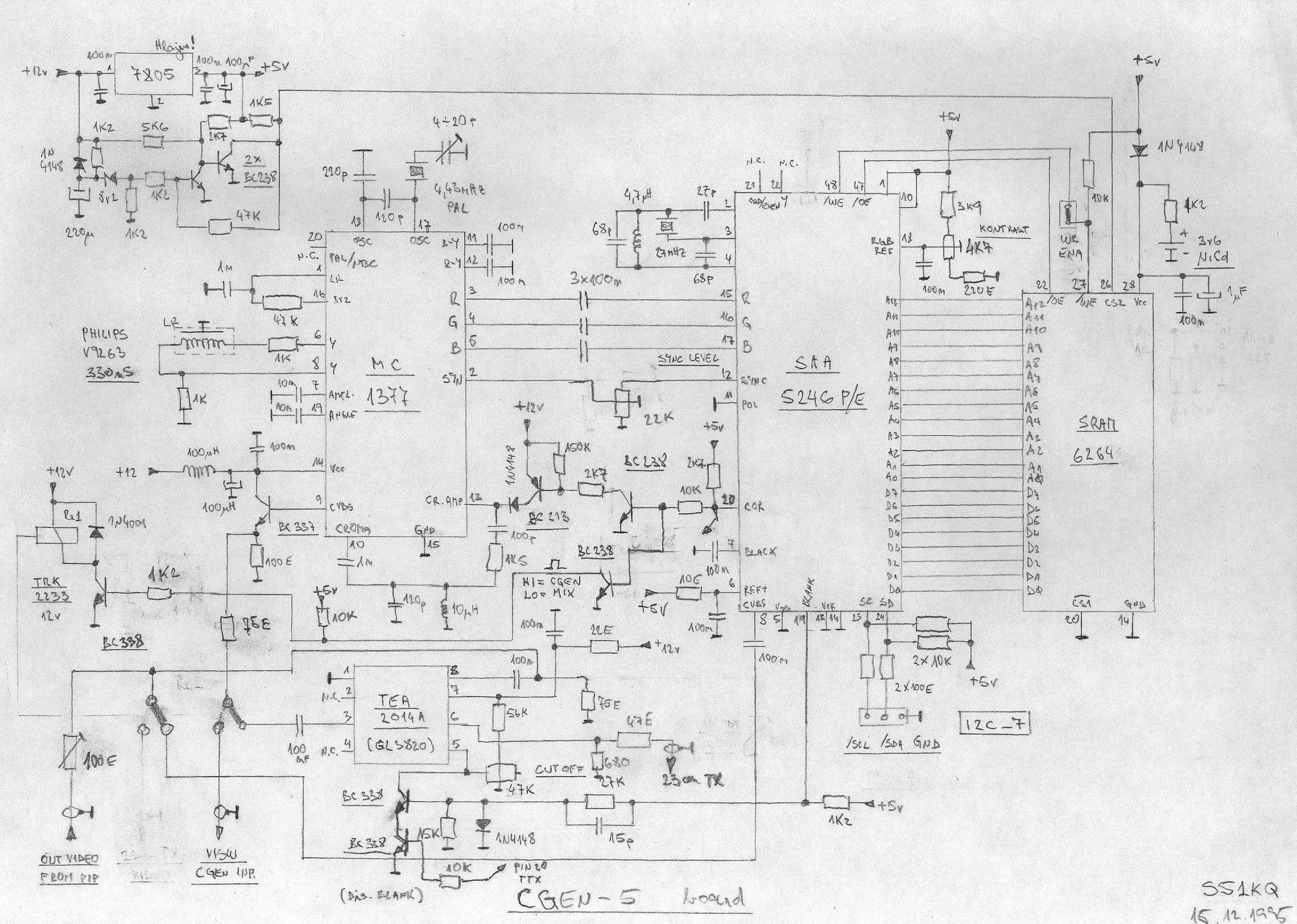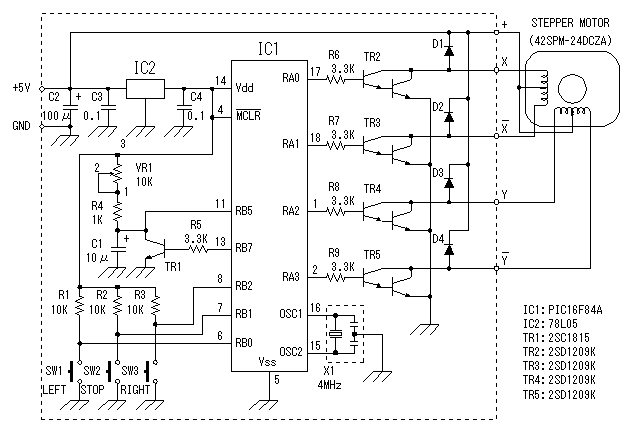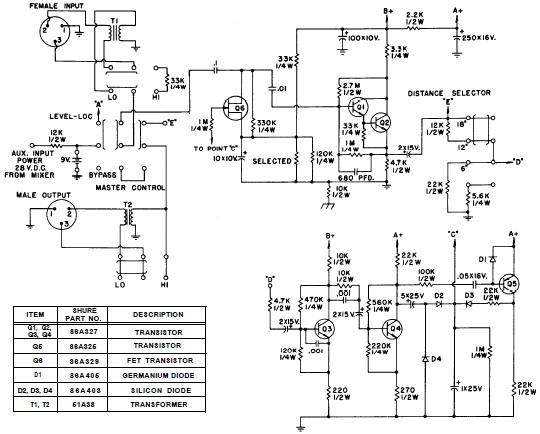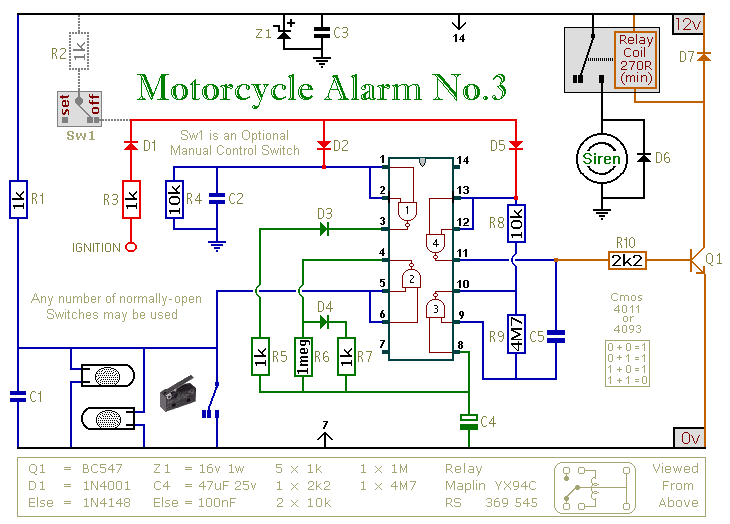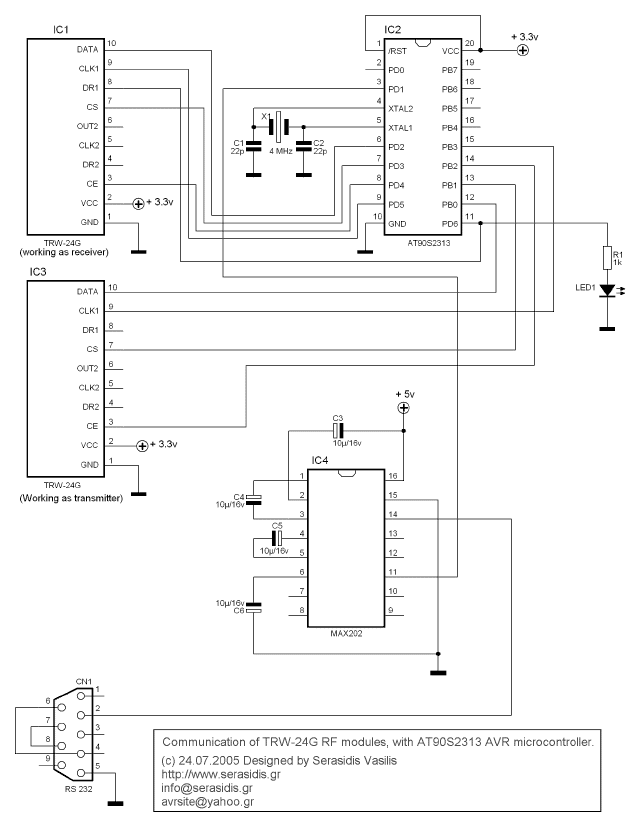
Temperature Controller With Defrost Cycle
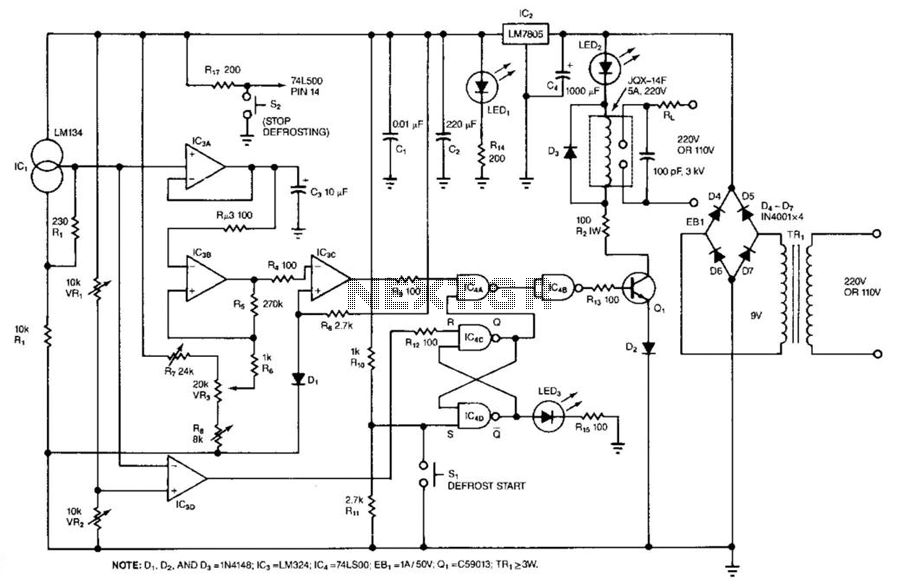
This temperature controller has a range of -50 to +150 °C and permits defrosting. R7, VR3, and R8 set the controller's trip point. SI initiates defrosting, and S2 cancels defrosting. VR1 and VR2 set the defrost temperature trip point. The LM134, IC1, is a thermal sensor. One section of IC3, a quad op-amp, buffers the sensor's output. The other section functions as a Schmitt trigger and buffer for the normal-cycle circuitry and as a comparator for the defrost-cycle circuitry. If a heater is to be controlled instead of a refrigerator, the final inverter in Q1's base circuit should be omitted. It is essential to select LM7805 voltage regulators that have outputs between 4.95 and 5.05 V; otherwise, the circuit may not function correctly.
The temperature controller circuit is designed to maintain a specified temperature range, specifically from -50 °C to +150 °C, making it suitable for various applications, including refrigeration and heating systems. The circuit is equipped with multiple resistors (R7, VR3, and R8) that allow for fine-tuning of the trip point, which is the temperature at which the controller activates or deactivates the connected device.
The initiation and cancellation of the defrosting process are controlled by switches SI and S2, respectively. This feature is particularly useful in refrigeration applications where frost build-up can hinder performance. The defrost temperature trip point is adjustable using variable resistors VR1 and VR2, providing flexibility in operation according to specific needs.
The LM134 thermal sensor (IC1) is integral to the circuit, providing accurate temperature readings. The output from the LM134 is buffered by one section of the quad op-amp IC3, ensuring that the signal is stable and suitable for further processing. The second section of IC3 operates as a Schmitt trigger, which helps eliminate noise and provides a clear transition between high and low states. This section also acts as a comparator for the defrost-cycle circuitry, ensuring that the defrost process is initiated and terminated at the correct temperatures.
For applications where a heater is preferred over a refrigeration unit, it is crucial to modify the circuit by omitting the final inverter in the base circuit of transistor Q1. This adjustment allows the controller to function appropriately with heating elements.
The circuit requires the use of LM7805 voltage regulators, which are essential for providing a stable 5 V output. It is critical to select LM7805 components that output between 4.95 V and 5.05 V to ensure proper operation of the entire circuit. Deviations from this voltage range could lead to malfunction or failure of the temperature control system. This temperature controller has a range of -50 to +150°C and permits defrosting. R7, VR3, and R8
The temperature controller circuit is designed to maintain a specified temperature range, specifically from -50 °C to +150 °C, making it suitable for various applications, including refrigeration and heating systems. The circuit is equipped with multiple resistors (R7, VR3, and R8) that allow for fine-tuning of the trip point, which is the temperature at which the controller activates or deactivates the connected device.
The initiation and cancellation of the defrosting process are controlled by switches SI and S2, respectively. This feature is particularly useful in refrigeration applications where frost build-up can hinder performance. The defrost temperature trip point is adjustable using variable resistors VR1 and VR2, providing flexibility in operation according to specific needs.
The LM134 thermal sensor (IC1) is integral to the circuit, providing accurate temperature readings. The output from the LM134 is buffered by one section of the quad op-amp IC3, ensuring that the signal is stable and suitable for further processing. The second section of IC3 operates as a Schmitt trigger, which helps eliminate noise and provides a clear transition between high and low states. This section also acts as a comparator for the defrost-cycle circuitry, ensuring that the defrost process is initiated and terminated at the correct temperatures.
For applications where a heater is preferred over a refrigeration unit, it is crucial to modify the circuit by omitting the final inverter in the base circuit of transistor Q1. This adjustment allows the controller to function appropriately with heating elements.
The circuit requires the use of LM7805 voltage regulators, which are essential for providing a stable 5 V output. It is critical to select LM7805 components that output between 4.95 V and 5.05 V to ensure proper operation of the entire circuit. Deviations from this voltage range could lead to malfunction or failure of the temperature control system. This temperature controller has a range of -50 to +150°C and permits defrosting. R7, VR3, and R8
set the controller"s trip point. SI initiates defrosting, S2 cancels defrosting. VR1 and VR2 set the defrost-temperature trip point. The LM134, IC1, is a thermal sensor. One section of IC3, a quad op amp, buffers the sensor"s output. The other section functions as Schmitt trigger and buffer for the normal-cycle circuitry and as a comparator for the defrost-cycle circuitry. you wish to control a heater rather than a refrigerator, omit the final inverter in Ql"s base circuit.
You must select LM7805s that have outputs between 4.95 and 5.05 V, or the circuit might not work.
